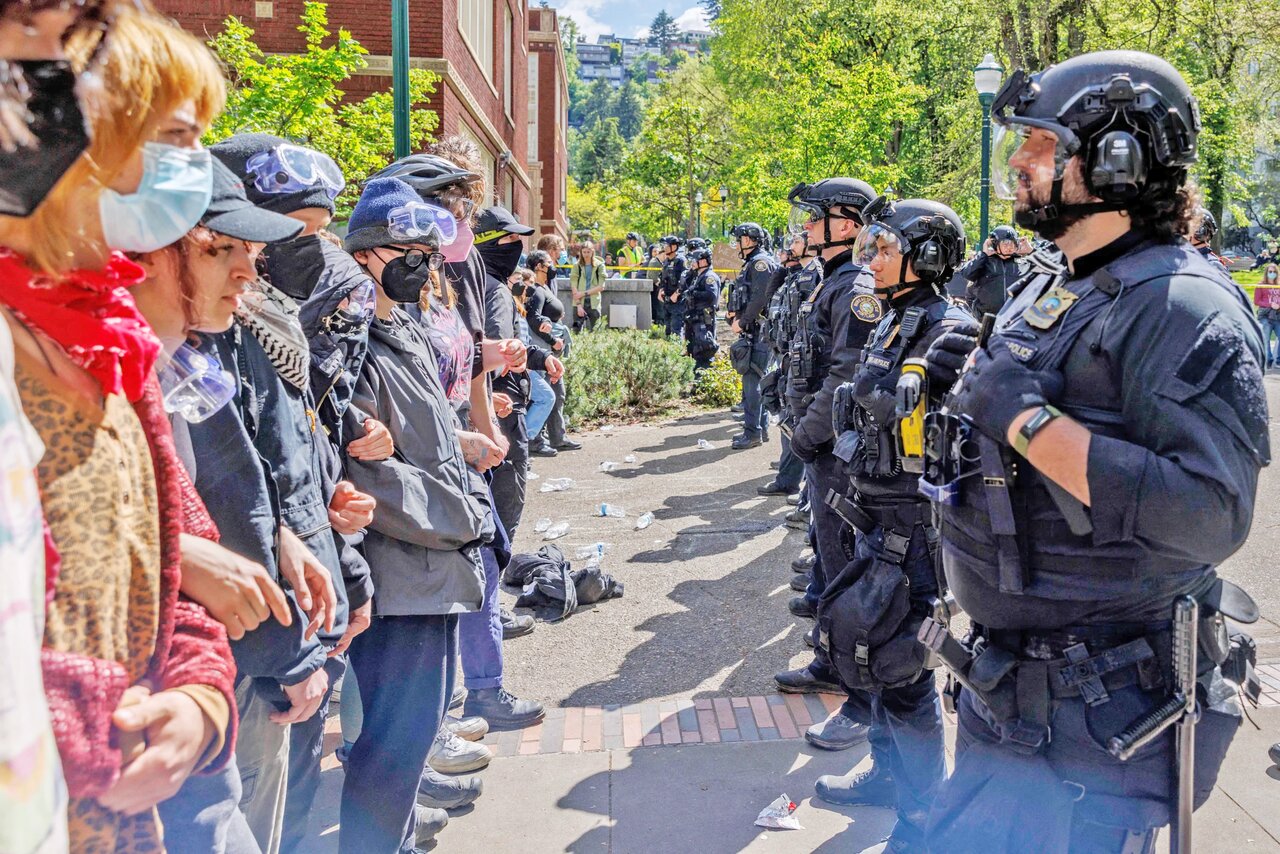Global Awakening

TEHRAN - October 7 marks the anniversary of the day one of the most devastating wars against humanity was launched. A year ago, Israel began the massacre of Palestinians in Gaza through airstrikes, starvation, and torture. The enclave now lies in ruins with approximately 45 million pounds of rubble scattered across the Strip. Entire families have been wiped off the face of the earth, and those managing to flee the direct fire of the Israeli military will carry the physiological scars of the war forever.
A year of attacks on homes, hospitals, schools, mosques, churches, and refugee camps has passed and the Palestinian civilians in Gaza do not see any prospects for the regime’s aggression ending. Not only hasn’t Israel’s violence in Gaza abated, but also it has spread to other parts of the region including Lebanon, Yemen, Syria, and even Iran.
Hamas fighters that caused Israel’s biggest intelligence defeat and shattered the myth of the regime’s invincibility are still resisting strongly. Rockets are still being fired at Israeli positions in the occupied territories out of Gaza, and Resistance forces continue to liquidate Israeli soldiers in ground battles.
The end of this conflict remains uncertain, but it's crucial to reflect on the events of the past year and understand the underlying causes.
What were the circumstances surrounding Operation Al-Aqsa Storm
The Hamas Resistance movement carried out Operation Al-Aqsa Storm against the backdrop of months of heightened Israeli aggression against Palestinians in the occupied territories and over seven decades of oppression against the indigenous people of Palestine.
Hamas said its successful attack was a response to Israel's ongoing occupation, the blockade of the Gaza Strip, the expansion of settlements, Israel's disregard for international law, threats against the Al-Aqsa Mosque, and the overall suffering of the Palestinian people.
Has Israel achieved its stated objectives one year after the war?
When launching the devastating war on Gaza, Israeli Prime Minister Benjamin Netanyahu declared his intention to "eradicate Hamas," vowing to achieve this goal. However, Hamas remains far from defeated, and other mooted objectives of the regime, such as expelling Palestinians from Gaza or assassinating key Hamas leaders, have also failed to materialize.
What are the costs for Israel?
The biggest asset Israel has lost in the past year is undeniably the public opinion it had worked so dearly to keep on its side in the past several decades. Hundreds of thousands of people in different countries have taken to the streets in the past year to slam the regime’s war in Gaza, international organizations have grown scathingly critical of the Zionist regime, and more and more citizens across the world have begun to understand that Zionism has nothing to do with Judaism.
The regime has also suffered great economic losses which are expected to intensify, and most importantly Zionists no longer believe that they can be said in the “holy land”.
What impact has Al-Aqsa Storm had on the normalization process?
The train of the Abraham Accords, which was pushed out of the station by U.S. President Donald Trump in 2020, aimed to sideline Palestinians and integrate Israel as a normal state into the region. Trump managed to get Sudan, Morrocco, Bahrain and the UAE to hop on the train and Saudi Arabia was the next to join. Only a week before Operation Al-Aqsa Storm, Saudi Crown Prince Mohammad Bin Salman said he would soon normalize ties with Israel but that plan was immediately scrapped after the Hamas operation.
With growing hatred of Israel in the region, it seems unlikely that any West Asian state would be able to normalize ties with Israel without losing popular support.
How many civilian casualties have resulted from Israel's actions?
More women and children have been killed in Gaza by the Israeli military over the past year than in an equivalent period of any other conflict over the past two decades. Almost 42,000 Palestinians have lost their lives and around 96,000 civilians have been injured. Medical experts believe the number of casualties is a lot higher than the official figures, as the decimation of Gaza’s medical system makes it impossible to accurately keep track of the dead and injured.
What has been the most significant outcome of Al-Aqsa Storm?
While the past year has brought undeniable pain and suffering for the Palestinians, it is also indisputable that what Hamas did on October 7 has once again made the Palestinian cause front and center in the Islamic Ummah. The growing number of Abraham Accords signatories had threatened to further marginalize the Palestinian cause, pushing it to the backburner, if not completely forgotten. While this process may not have been stopped forever, it will likely remain stalled for a considerable period.
Can Israel restore the situation to what it was before October 7?
Since October 7, Israel has encountered many firsts. The regime was infiltrated by Gazans; its settlements in northern parts of the occupied territories were evacuated, leaving hundreds of thousands of Israelis homeless; its positions were attacked by dozens of missiles at a time, and its entire population spent several nights in shelters – all instances that had never happened to the Israelis before.
With Israel’s myth of invincibility gone, and the world growing more and more hateful of the regime, it seems unlikely that Netanyahu or any other Zionist government would be able to return to the time before October 7, 2023.
Leave a Comment